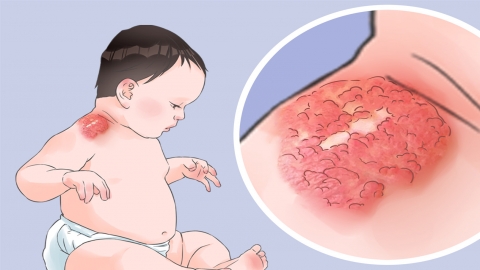What to do about infantile hemangiomas
Generally, neonatal hemangiomas may be caused by genetic factors, abnormal vascular development during the embryonic period, hormonal influences, abnormal proliferation of vascular endothelial cells, or abnormalities in the local microenvironment. It is recommended to seek timely medical consultation, identify the underlying cause, and then improve the condition under a doctor's guidance through general treatment, medication, surgical treatment, or other approaches. A detailed analysis is as follows:

1. Genetic factors: If there is a family history of hemangiomas, the risk of neonatal hemangiomas increases, and multiple hemangiomas in different locations may appear. If the hemangioma affects organ function or aesthetics, surgical removal can be performed to directly eliminate the affected tissue.
2. Abnormal vascular development during the embryonic period: During fetal development, abnormal differentiation of vascular tissue may lead to localized vascular proliferation and the formation of hemangiomas. These usually appear at birth or shortly thereafter. If the hemangioma is small and shows no obvious growth, regular observation may be sufficient, as most hemangiomas gradually regress with age. Avoid rubbing or squeezing the affected area in daily life, and maintain skin cleanliness.
3. Hormonal influences: Relatively high estrogen levels in newborns may stimulate the proliferation of vascular endothelial cells, triggering hemangiomas. As hormone levels in the newborn gradually stabilize, hemangiomas may resolve spontaneously. During this period, regular monitoring of the hemangioma's size and color changes is necessary, and growth records should be documented for physician evaluation.
4. Abnormal proliferation of vascular endothelial cells: Excessive proliferation of vascular endothelial cells forms abnormal vascular masses that cause hemangiomas, which may be accompanied by local skin elevation and color changes. Patients can follow medical advice to use medications such as propranolol cream, timolol eye drops, prednisolone tablets, etc., to inhibit vascular endothelial cell proliferation and promote regression of the hemangioma.
5. Local microenvironmental abnormalities: Hypoxia and hemodynamic changes in local tissues of the hemangioma can lead to abnormal vascular proliferation, commonly seen on the head, face, and neck. If medication proves ineffective, laser therapy may be performed. Specific wavelength lasers can destroy abnormal blood vessels and achieve therapeutic closure. After treatment, protect the affected area from sun exposure and prevent infections.
In daily care, dress the newborn in soft and loose clothing to minimize friction on the hemangioma area. Monitor for ulceration or bleeding of the hemangioma and promptly manage any abnormalities. Maintain a suitable indoor temperature to avoid excessive sweating due to overheating, which could irritate the affected area.






